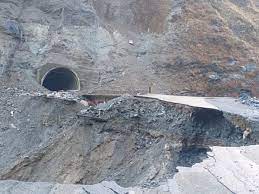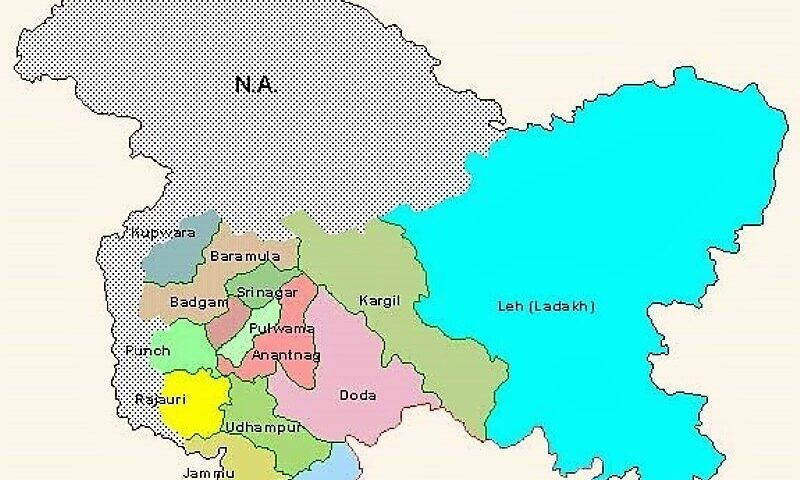Jammu-Srinagar National Highway Reopens Partially After Road Collapse – A Lifeline in Crisis
Srinagar 12 May 2025: The Jammu-Srinagar National Highway (NH-44), a critical route connecting the Kashmir Valley with the rest of India, has been partially reopened after a major landslide in Ramban district led to its temporary closure. While light vehicles have been allowed to pass, heavy vehicles are still awaiting clearance as authorities assess road conditions.
This article delves into the significance of NH-44, the causes of frequent road collapses, their impact on trade and daily life, and long-term solutions to ensure safe travel.
The Importance of the Jammu-Srinagar National Highway
NH-44 is more than just a roadway—it’s the economic backbone of Kashmir, ensuring the movement of essential supplies, trade goods, and tourism flow.
Why NH-44 is Crucial for Kashmir:
- Primary Supply Chain Route: Transporting food, medicines, fuel, and daily essentials into the Valley.
- Vital for Trade & Commerce: Businesses rely on the highway for imports and exports between Kashmir and other states.
- Tourism & Connectivity: Tourists flock to Kashmir via this highway, supporting the local economy.
- Medical Emergencies: Patients needing advanced treatment in Jammu or beyond use this route for urgent travel.
The temporary closure due to the road collapse disrupted all these crucial functions, leaving thousands stranded and supply chains on hold.
Causes Behind the Road Collapse in Ramban
Landslides and road collapses are frequent occurrences along NH-44, particularly in the hilly terrains of Ramban. Several factors contribute to the instability of this crucial highway:
Natural Causes:
- Heavy Rainfall: Excessive rainfall weakens soil, causing landslides.
- Geological Instability: The Himalayas are prone to frequent landslides due to tectonic activity.
- Snowmelt Effect: Melting snow increases water content in soil, triggering collapses.
Human-Induced Factors:
- Unplanned Road Expansions: Continuous road widening without proper terrain studies weakens structural stability.
- Unregulated Construction: Hill-cutting for new infrastructure often disturbs natural land balance.
- Heavy Traffic Load: Increased vehicle movement leads to quicker wear and tear of roads.
Experts suggest that improved engineering solutions, better drainage planning, and controlled land development can mitigate such collapses in the future.
Traffic Disruptions & Impact on Supply Chain
The sudden collapse at Marog, Ramban, caused severe disruptions in transportation, creating long queues of vehicles waiting for clearance.
Immediate Consequences of NH-44 Closure:
- Thousands stranded due to halted traffic in both directions.
- Perishable goods delayed, affecting markets in Kashmir.
- Fuel shortage concerns due to restricted tanker movement.
- Tourists forced to alter plans, leading to cancellations.
Supply trucks lined up for kilometers, awaiting clearance as authorities worked to restore the route for essential transportation.
While LMVs have resumed movement, the restriction on heavy vehicles continues to impact businesses, traders, and travelers.
Government Response & Restoration Efforts
Authorities acted swiftly to restore traffic flow, prioritizing safety while clearing debris.
Steps Taken to Reopen NH-44:
- Road clearance operations using heavy machinery for debris removal.
- Temporary stabilization measures to prevent further collapses.
- Traffic police management ensuring smooth LMV movement.
- Weather monitoring to anticipate future disruptions.
Officials confirm that once structural integrity is assessed, heavy vehicles will be allowed on the highway.
Travel advisories continue to caution drivers about potential delays and alternative routes.
Long-Term Solutions for Safer Travel on NH-44
Ensuring uninterrupted connectivity in Kashmir requires strategic planning, engineering advancements, and sustainable road management.
Proposed Measures for Highway Safety:
- Strong Retaining Walls: To prevent landslides in vulnerable zones.
- Advanced Drainage Systems: Reducing waterlogging risks during rains.
- Use of Modern Technology: AI-based monitoring for early detection of weak zones.
- Alternative Routes & Tunnel Projects: Expanding road networks to reduce dependence on NH-44.
Infrastructure experts stress that proactive planning and policy changes will be crucial in reducing future disruptions.
Bottom-Line – The Road to Stability & Progress
NH-44 remains Kashmir’s lifeline, but its vulnerability to landslides demands urgent reforms. The partial reopening offers temporary relief, but lasting solutions require better infrastructure, scientific planning, and efficient maintenance.
As Kashmir’s economy and tourism depend on seamless travel, prioritizing highway stability will ensure a stronger, more connected future.
The road may collapse, but Kashmir’s resilience never does.




